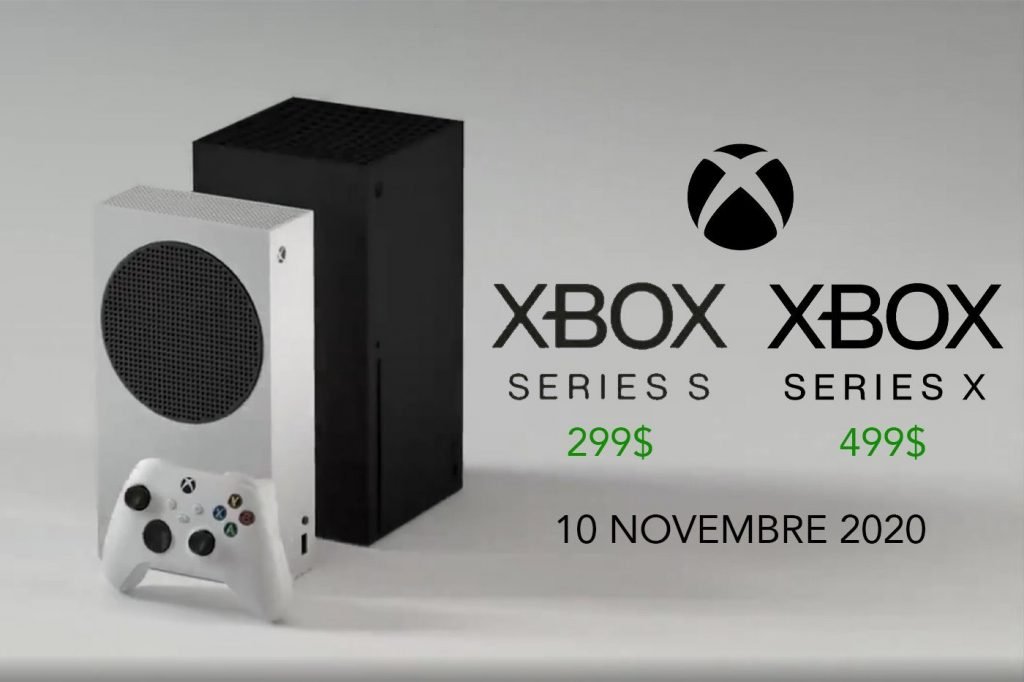After confirming its long-rumored less expensive next-gen console, Microsoft is now fully detailing its new Xbox Series S console. The $299 next-gen powerhouse will arrive on November 10th, which is meant to be a cheaper option for 1440p gaming at 60 fps (up to 120 fps)
Design
Microsoft says this is the smallest ever Xbox which will offer next-gen performance. The Series S looks more like the Xbox One S – it even has a similar grill on its top (when horizontal). This is often an all-digital console, which is Microsoft’s way of claiming that there’s no optical drive in it and you’ll be downloading games instead which is simply fine if you getting an Xbox Game Pass subscription.
Processer and Graphics
Microsoft is using an equivalent CPU in Xbox Series S as they utilized in Xbox Series X, running at 3.6Hz which is merely slightly slower than the 3.8GHz speed of Zen 2-based CPU in its Series X console. While Microsoft doesn’t enter detailed specifics on the GPU specs, but we understand that the Xbox Series S has 20 CUs at 1.550GHz. This calculates to around 4 teraflops of performance, compared to the 12 teraflops (52 CUs at 1.825 GHz) found on the larger version i.e. Xbox Series X.
Microsoft is also employing a hardware scaler in the Xbox Series S to play games for 4K on TVs, and there’s even full hardware support for AMD’s latest RDNA 2 feature set, including hardware-accelerated ray tracing, mesh shaders, and variable rate shading, two features that thus far have limited support on PC.

Memory and Storage
Series S includes the 10GB of GDDR6 memory running at 224Gbps, compared to the 16GB of GDDR6 found on the Xbox Series X. What of these specs mean is that the Xbox Series S should be quite capable of running next-gen games at a lower resolution than the Xbox Series X. The smaller console also has Microsoft’s Xbox Velocity architecture for the custom 512GB SSD, which enables features like Quick Resume to rapidly switch between games. Microsoft is additionally using a sampler feedback streaming, allowing the Xbox Series S to only load the portions of textures required to render the scene, which should improve memory efficiency and I/O speeds.
Games and Accessories
All Xbox games (can be Xbox One, Xbox Series, or even original Xbox and Xbox 360) are expected to work across the entire family of consoles. With the games coming under the banner of “Optimised for Xbox Series X“. As for accessories, Xbox has confirmed that all Xbox One controllers, headsets, and other accessories will also work with both new consoles.

Xbox Series X Vs Xbox Series S
| Xbox Series X | Xbox Series S | |
| Design | Designed to stand vertically | Designed for both vertical and horizontal placing |
| Graphics | AMD RDNA 2 GPU, 12.15 TFLOPS, 52 CUs, 1.82GHz clock speed | AMD RDNA 2 GPU, 4 TFLOPS, 20 CUs, 1.55GHz clock speed |
| RAM | 16GB GDDR6 | 10GB GDDR6 |
| Processor | Custom Zen 2 CPU, eight cores, 3.8GHz clock speed | Custom Zen 2 CPU, eight cores, 3.6GHz clock speed |
| Memory Bandwidth | 10 GB at 560 GB/s, 6GB at 336 GB/s | 8 GB at 224GB/s, 2 GB at 56GB/s |
| Storage | 1TB custom PCie Gen 4 NVMe SSD | 512GB Custom PCie Gen 4 NVMe SSD |
| Performance | 4K at 60 fps (up to 120 fps) | 1440p at 60 fps (up to 120 fps) |
| Media | 4K UHD Blu-ray, DVD, CD | Digital only |
| Price | $499 (Rs. 49,990) | $299 (Rs. 34,990) |
As you can see, in the above table the primary difference between Xbox Series X and S is their different GPUs and their resolutions. Which brings the price of Xbox Series S down. Microsoft is now set to launch both the Xbox Series X and Series S on November 10th. The Xbox Series X is going to be priced at $499, with the smaller Series S priced at $299.

3 Comments
Pingback: Xbox Series V could be real, rumors are pointing towards a third next-gen console - Craffic
Pingback: PS5 file sizes revealed for Spider-Man: Miles Morales and Demon's Souls 2020 - Craffic
Pingback: Elon Musk says Cyberpunk 2077 is playable in Tesla Model S which have 10 Teraflops of processing power - Craffic